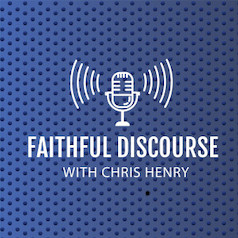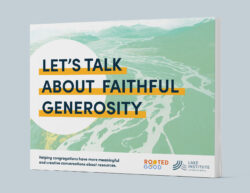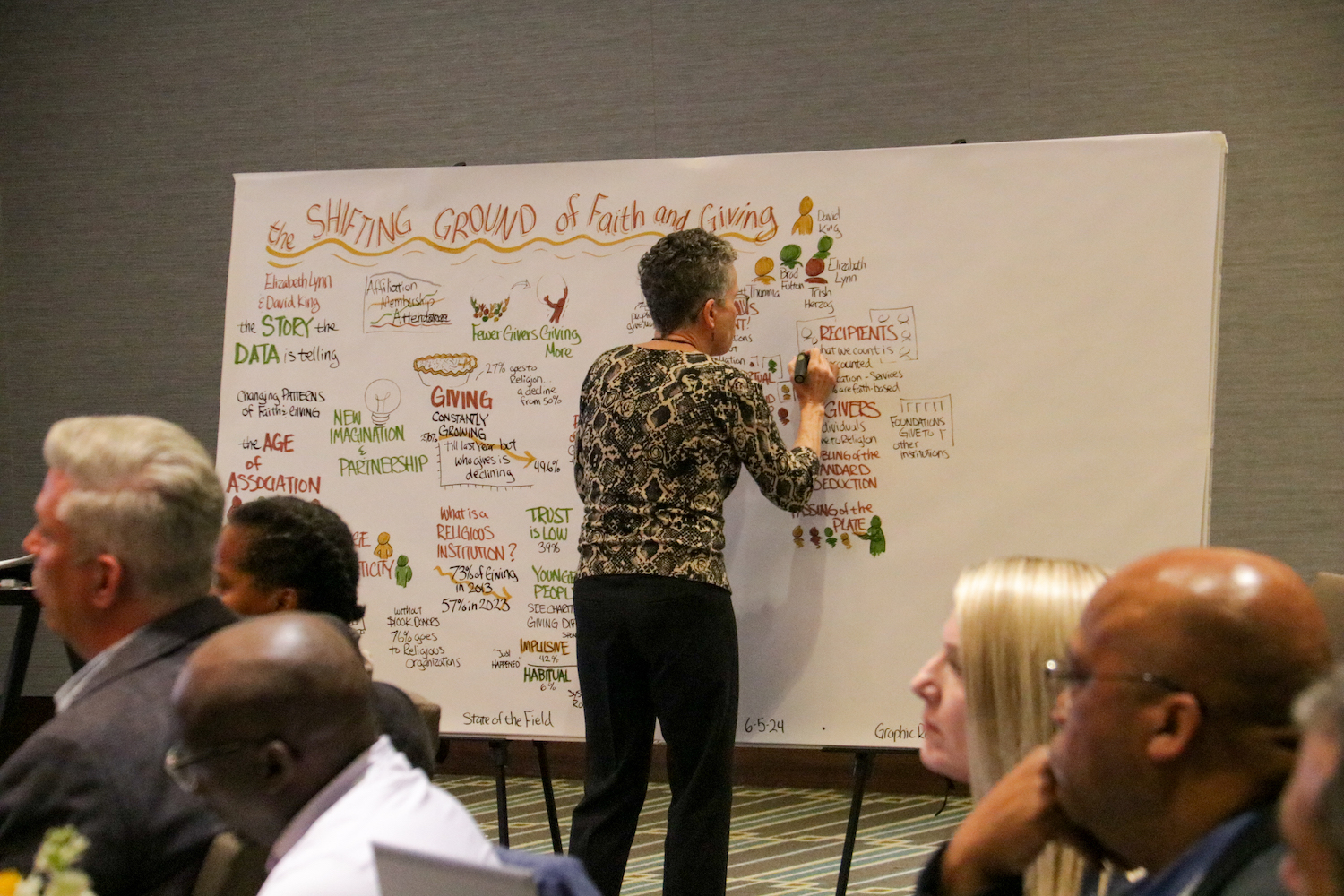Talking about the State of Faith and Giving
Talking about the State of Faith and Giving
By Elizabeth Lynn, PhD and David P. King, PhD
Late last month, the Lilly Family School of Philanthropy and Giving USA released their annual report on American charitable giving—and two Lilly Family School colleagues, Jon Bergdoll and Anna Pruitt, were kind enough to write here about findings specific to religion.
The 2024 findings confirm patterns that have been visible for some time. They show continued declines in the percentage of charitable donations as well as real (inflation-adjusted) dollars going to religion. Seeking to contextualize these findings, Pruitt and Bergdoll noted parallel decreases in rates of religious attendance and affiliation, and in the overall percentage of households that are engaging in charitable giving of any kind.
The 2024 Giving USA report offers a crucial ‘30,000-foot view’ of the landscape of giving, and giving to religion, today. The view from above is stark and sobering. Both faith and giving are changing—and some of the changes look connected.
But what do these shifts mean for leaders on the ground, people who guide and support clergy and congregations, faith-based organizations, faith-inspired donor networks and foundations, faith-based higher education, and theological schools?
What can leaders on the ground do in response to these reported changes in faith and giving?
Start Talking in Wider Circles …
One thing we all can do is start talking about these changes—and with conversation partners who are outside our usual circles, sector, or denomination.
In early June Lake Institute on Faith & Giving did just this. We brought together fifty leaders of religious networks and institutions, organized philanthropy, donor associations, higher education, the private sector, and the non-profit sector, for a unique conversation about the “state of the field” of faith and giving. The two-day convening was designed to help inform Lake Institute’s ongoing research and education agenda, while building shared awareness and relationships among different kinds of organizations on the landscape of faith and giving, for the benefit of those we serve and our common life together.
All these leaders are actively engaged in and impacted by the complex ecosystem of faith and giving in American society. And yet, notably, no one knew everyone in that room, and most people knew just a handful of other participants. Together, starting with the “30,000 foot view” of how faith and giving are changing, we crafted a conversation—and the beginnings of a shared vocabulary—across well-established silos.
Talk about Differences …
From the start, this diverse group of leaders accepted the basic premise of that 30,000-foot view: namely, that faith and giving and associational life are shifting in significant and related ways, and that new imagination and partnerships are essential for faith communities to thrive on shifting ground. These core concepts served as a kind of foundation and framework for conversation throughout the convening.
At the same time, participants stressed the importance of attending to differences, both in how specific communities engage in faith and in giving—and in how they are experiencing reported changes. Congregations across America have differing models of faith and giving, shaped by unique racial, ethnic, cultural and regional traditions, and they face divergent obstacles and opportunities, given longer histories of systemic inequality in access to resources.
Congregations are also on varying timelines of development. On any street in America today, an immigrant congregation may just be getting started, while a neighboring mainline Protestant or Catholic congregation may be approaching its endpoint.
In short, while leaders value the 30,000-foot view, they told us they are hungry for more context-specific descriptions of what is happening, both in their own communities and beyond.
Feel the Urgency …
A sense of urgency for new action on this shifting ground was also in the air and in the conversation.
Participants repeatedly underscored the urgency of the current moment. This urgency is related to the rate of change in faith, giving, and associational life; the rise of polarization, distrust, and profound personal loneliness; and the impact of all these changes on individuals, congregations, and communities.
The urgency is also grounded in a feeling that, if faith communities and organizations do not act now, the opportunities of the moment will be lost. Leaders spoke about the issue of time, how to understand the arc of change we are in, and how to do work that is at once immediate and pressing, and yet perhaps necessarily slow.
This sense of urgency is shared across sectors. For many worshipping communities, the urgency is also quite concrete—and it is felt perhaps most concretely in the problem of buildings, a topic that threaded much of the large group conversation. But again, participants stressed that building problems vary widely by context. Some congregations have extensive facilities and campuses that no longer align with mission and ministry. Others have buildings that are missionally essential but badly in need of repair, often because they have been systematically excluded from investment and support. Meanwhile, immigrant faith communities are sometimes inheriting the buildings and building problems of Catholic and mainline congregations.
Innovate … with New Partners!
And yet, amidst the urgency of the moment, participants also found great hope in signs of innovation on both sides of the faith and giving relationship. They emphasized the power of stories of innovation and creativity to offer encouragement and hope, such as the stories found in Lake’s Faithful Generosity Story Shelf.
The leaders we gathered told us that faith communities are looking afresh at their substantial assets (human, theological, material and financial), and thinking creatively about how to re-purpose those assets for mission and ministry. In order to innovate, they also recognize they must engage new partners, both in their local context, and across sectors.
Engaging with Local Communities: Participants emphasized the need for congregations to focus hyper-locally in this time of change, assessing community needs and forming partnerships to address those needs, perhaps by starting with people in their congregations who are already connected.
Engaging with Philanthropic and Government Partners: Participants also emphasized the need for new funding pathways between faith communities and philanthropic organizations and government entities, while acknowledging that building these pathways will require change on both sides.
Positively, the philanthropic leaders present noted that some foundations are taking a new look at faith-based organizations as partners for the common good—and seeking to be more accountable to communities that have been excluded from funding in the past, through innovations in grantmaking like a common application and a re-granting process. Meanwhile, government leaders emphasized the opportunity to develop more transformative relationships with faith communities, especially around affordable housing projects but also in other kinds of community service.
But leaders across the sectors also talked about the challenges of innovation, especially in the inherent tension between sustaining organizations while supporting and fostering creativity at the same time. Congregational innovation, in particular, requires clergy and lay leaders to work together in new ways, and this can be a hard ask of clergy who are often exhausted by the basic work of keeping the doors open and the lights on.
Next Time: What Resources are Needed to Support Leaders on Shifting Ground?
In our next Insights newsletter, Lake Institute will explore further learnings from our 2024 State of the Field convening, with attention to the kinds of resources that these leaders told us they need most in order to navigate on the shifting ground of faith and giving. So stay tuned!
And, in the months to come, we will be attending both to “Big Picture” data and to diverse on-the-ground stories of faith and giving, asking what these mean for our work, and seeking out conversation partners across sectors and silos as we go.
We hope you will do the same.
Expanded Perspective - The Balcony View: Embracing A Beautiful Mess
By Aimée A. Laramore, MBA
Imagine sitting in the upstairs seats of an auditorium, sporting event, or theater. Although we get excited about being up close and personal for our favorite artists or performers, over time we gain appreciation for being a bit removed from the fanfare and frenzy that can dominate the space. Shifting to the balcony, we gain a different view of the action, a different space to take it all in. You are close enough to feel the energy and excitement, far enough to catch a breeze and spread out a bit.
Being on the balcony allows you to catch a second wind and decide exactly where to go and what to do. If only we take the time to look at each season with a different lens.
Over time you realize, being on the floor can be messy. Our goal is to ensure our deeply engaged ministry, fundraising and community engagement is messy with meaning.
For years, religious leaders and fundraisers alike have benefitted from the information at the balcony view. Yet, we often find it difficult to build in the time necessary to reimagine our next move. From best practices in changing times, to rallying calls to get back to the basics, our leaders, practitioners, and ambassadors are constantly working towards effectively framing the challenges while simultaneously seeking solutions at the ground level. At our best, we approach the reminders of decreased giving and decreased affiliation with a deep, sometimes uncommon hope, that data has the potential to drive new decision in the thick of floor level work.
In development, alongside our peers and colleagues who provide a special vocational service to faith-based institutions, we are being challenged to explore new vantage points in shifting times. Recent conversations have provided equal attention to impact investing, corporate social responsibility, and donor advised funds, while never losing sight of theological frameworks, spiritual practices, and the heart of the matter. Solutions require an intentionality around our faith and the way we forge ahead. We are better off when we dig beyond headlines and data trends, to do the hard and complex work. There is simply too much at stake. There is a lot to be done on the ground where congregations, faith-based initiatives, community organizations and ambassadors continually unite to remove the barriers to connectivity and productivity in the public, private and nonprofit sector.
Lake Institute brought an eclectic group of faith, fundraising and thought leaders together, which framed what is possible with uncommon hope. The beauty of the experience was an experience that allowed each of us to do more than embrace and effectively name the challenges of these times. We understand at the ground level, we have a beautiful mess on our hands, and a lot of work to do. Faith environments that champion authentic dialogue alongside integrated and informed solutions can be rare.
We need more of the eclectic spaces, the benefit of the information from the balcony, and the unparalleled energy and resolve on the ground. At our best, we leverage the view, and busy ourselves with the work of testing new approaches, innovating new ministry, and equipping our ambassadors to make meaning, even in messy situations.
 Aimée Laramore is the owner of ALlyd Solutions, a philanthropic services consulting firm, and leads limited life philanthropy at the Johnson Center for Philanthropy. She is passionate about the intersection of faith, giving and culture. Aimée has over two decades of experience in the philanthropic ecosystem – serving foundations, intermediaries and nonprofits. She has worked with organizations across denomination and socio-economic structures, and through a broad array of mission-driven entities in religion, health, community development and higher education. She is an established writer, strategist, and thought leader, with roots at Lake Institute. The greatest love of her life is being mother to three hybrid adults, Lydia, Noah, and Andrew.
Aimée Laramore is the owner of ALlyd Solutions, a philanthropic services consulting firm, and leads limited life philanthropy at the Johnson Center for Philanthropy. She is passionate about the intersection of faith, giving and culture. Aimée has over two decades of experience in the philanthropic ecosystem – serving foundations, intermediaries and nonprofits. She has worked with organizations across denomination and socio-economic structures, and through a broad array of mission-driven entities in religion, health, community development and higher education. She is an established writer, strategist, and thought leader, with roots at Lake Institute. The greatest love of her life is being mother to three hybrid adults, Lydia, Noah, and Andrew.
Podcast: The Love of Humanity
 From individual carts of groceries to macro solutions to the world’s biggest challenges, congregations play key roles in giving and advocacy. David King joins Rev. Chris Henry, Senior Pastor of Second Presbyterian Church in Indianapolis, to discuss the shifting trends in generosity and giving, the powerful overlap between nonprofit, business, and government sectors, and how we can be philanthropists with local and global impact.
From individual carts of groceries to macro solutions to the world’s biggest challenges, congregations play key roles in giving and advocacy. David King joins Rev. Chris Henry, Senior Pastor of Second Presbyterian Church in Indianapolis, to discuss the shifting trends in generosity and giving, the powerful overlap between nonprofit, business, and government sectors, and how we can be philanthropists with local and global impact.
Free Discussion Guides
 We created two free discussion guides to help you make the best use of our Story Shelf in your congregation or organization. Let’s Talk About Faithful Generosity is a comprehensive, 17-page tool for facilitating creative and imaginative conversations about how congregations can use their resources in service to their local community. Ways to Use the Story Shelf is one-page guide that outlines ways to use the Story Shelf and reflection questions for group discussion. We hope you will use these resources to deepen conversations in your congregation or organization!
We created two free discussion guides to help you make the best use of our Story Shelf in your congregation or organization. Let’s Talk About Faithful Generosity is a comprehensive, 17-page tool for facilitating creative and imaginative conversations about how congregations can use their resources in service to their local community. Ways to Use the Story Shelf is one-page guide that outlines ways to use the Story Shelf and reflection questions for group discussion. We hope you will use these resources to deepen conversations in your congregation or organization!
Subscribe
Insights is a bi-weekly e-newsletter for the religious community and fundraisers of faith-based organizations that provides:
- Reflections on important developments in the field of faith and giving
- Recommended books, studies and articles
- Upcoming Lake Institute events

